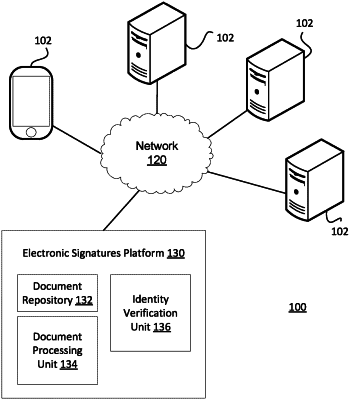| CPC G06F 21/6209 (2013.01) [G06F 16/176 (2019.01); G06F 21/64 (2013.01); H04L 9/3247 (2013.01)] | 16 Claims |

|
1. A computing device, comprising:
a communications module communicable with an external network;
a memory; and
a processor coupled to the communications module and the memory, the processor being configured to:
receive, from a first client device:
a first electronic document in a first state, the first electronic document containing first data in the first state;
a selection of one or more second client devices;
send, to each of the one or more second client devices, an invite containing a link to access the first electronic document in the first state;
receive, from at least one of the one or more second client devices, a first indication of approval for the first electronic document in the first state;
detect a change in state of the first electronic document from the first state to a second state based on detecting changes to document data of the first electronic document made via one of the second client devices;
identify a first subset of the first and second client devices including devices that did not provide any indication of approval for the first electronic document and devices that have already received requests for updated approvals for the first electronic document;
send, to a second subset of the first and second client devices that are not included in the first subset, requests to provide indications of approval for the first electronic document in the second state;
receive, from the second subset of the first and second client devices, second indications of approval for the first electronic document in the second state; and
generate a locked form version of the first electronic document in the second state for submitting to a virtual document signing ceremony.
|